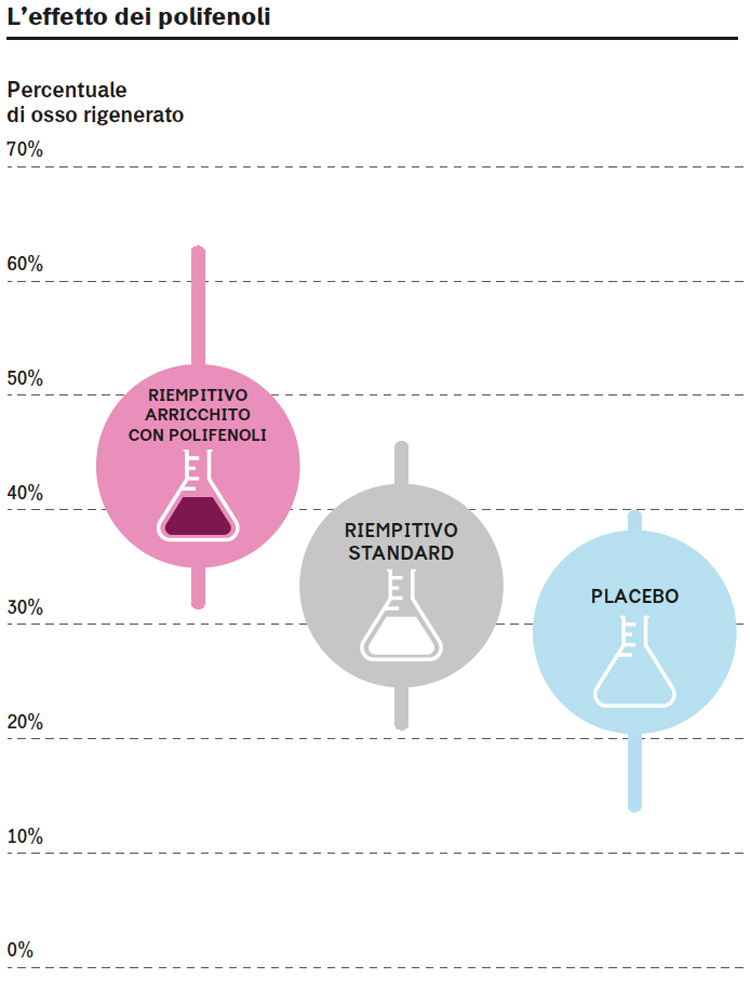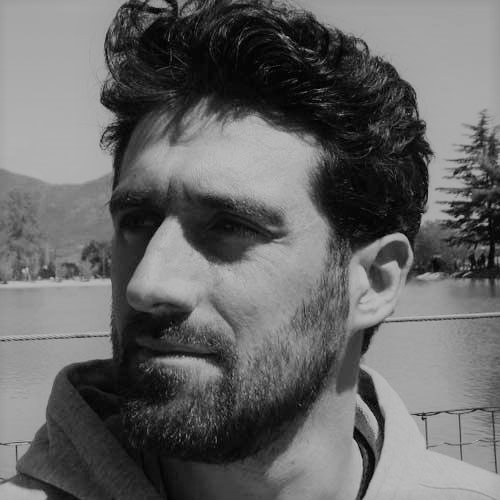It has all the ingredients to become a successful story. We are talking about Nobil Bio Ricerche, a Piedmont-based business located in Portacomaro, in the Asti area, that for over twenty years has specialized in the sector of dental implant materials. Indeed, the company has made research and innovations its strong suit, but with an edge, namely that of sustainability and recovery of raw materials. In a nutshell, the bioeconomy. So, Nobil Bio Ricerche is ready to launch on the market its new bone filler – that used in dental implantology – containing polyphenols, extracted from pomace from wine-making processes typical of the Piedmont hills. Thanks to the polyphenol molecules’ characteristics, the filler is to stimulate bone regeneration, speeding up post-operation recovery period, both in dentistry and surgery.
The wine-producing sector, in this case that of the Asti region, suddenly becomes not just a high quality wine production area, but a mine of raw materials in its own right. Because from what up until now has been considered waste or a by-product, it is currently possible to extract a series of important molecules for those processes improving human health and consequently life quality.
Circular Economy, When Waste Becomes a Resource
Let’s talk about the circular economy. Such an economy extracts fewer raw materials and recovers them through widespread collection and recycling. In such context, there is no waste, but only new materials to reuse in increasingly innovative and innovating sectors.
“If on the one hand for our applications we need marginal quantities of wine pomace, on the other it shows how heaps of ‘waste’ produced every year can represent true mines of precious materials,” explains Marco Morra, Nobil Bio Ricerche CEO. “A molecular science of waste is being developed. In this way, a new perception of waste is being created, mainly because of all the molecules it can contain.”
It is no coincidence that, last December, the European Commission adopted a new package of measures to help European businesses and consumers to carry out the transition towards a circular economy. “Our planet and our economy will not survive if we carry on following the motto ‘take, transform, throw away’” Vice-Chairman Frans Timmerman – in charge of the sustainable development – declared in a note. “Resources are precious and are to be conserved, exploiting their potential economic value to the full. The aim of the circular economy is to reduce waste while protecting the environment, but it also implies a profound transformation of how our entire economy works. Let’s rethink the way in which we produce, work and buy: we will create new opportunities and new jobs. The current package represents the general framework that will allow such transformation. It puts forward a credible and ambitious path for a better waste management in Europe, backed up by actions concerning the whole products cycle; it embodies both a smart set of rules and regulations and EU-level incentives that will help businesses and consumers – but also national and local authorities – lead such transformation.”

This is what Nobil Bio Ricerche decided to do, supporting not only research, but the creation of Innuva, an outright association of local companies for the promotion and application of polyphenols extracted from grape processing, which today are essentially thrown away or used to produce energy. “The association stems from a collaboration between Nobil Bio Ricerche and Uni-Astiss university hub” claims engineer Giorgio Iviglia, company researcher. “It is a project started to disseminate the discoveries and acquired knowledge not only to the biomedical community, but also to other sectors, such as the cosmetic, nutraceutical or textile ones. Founded two years ago, the association’s aim is to bring together all those companies basing their business on the circular economy, to give a new life to wine-making by-products, thus obtaining new ones.”
Innovation and a relationship with the local area is key, while keeping in contact with the rest of the industrial sector and research. “With this association we would like to act as an example also for other movements that may be created in the area for the reuse of by-products from sectors other than the wine-making” concludes Iviglia.
Polyphenols and the fight against aging
Polyphenols are just organic natural molecules contained in many vegetable species, boasting effective antioxidant properties and the ability to contain free radicals. The latter are present in the cells and products, for example during an inflammation in order to fight pathogens. ROS (Reactive Oxygen Species), which is another name for free radicals, though, often attack healthy cells, damaging tissues. Hence skin aging or diseases such as pyorrhoea, ascribable to an excessive production of free radicals. In this case, scientific literature has been working for years to demonstrate how polyphenols, contained in wine as well, are able to reduce the so-called oxidative stress, thus preventing cellular aging.
Info
 Interview with Marco Morra, Nobil Bio Ricerche CEO.
Interview with Marco Morra, Nobil Bio Ricerche CEO.
Edited by Rudi Bressa
DOC Polyphenols
At Nobil Bio Ricerche, Dr. Morra, together with his wife, Dr. Clara Cassinelli, focused on science, chemistry and nature. Result: an innovative polyphenol-based bone filler and an aging cream derived from Barbera and Grignolino grapes.
How did you come to this new innovative product?
“At Nobil Bio Ricerche we decided to develop new products, always linked to oral implantology. In this case we developed bone fillers, able to promote the formation of new bone. Building on the existing scientific literature, we realized that quite a substantial amount of studies on the effects of polyphenols on bone regeneration is available. Hence the idea to develop a bone filler containing polyphenols, in our case recovered from wine pomace. The biological properties of such substances is an advanced research field at world level and our work is the result of that.”
How can this new product affect dentistry and surgery?
“Such product could speed up bone regeneration and consequently reduce the duration – by about six months – of such operation. In particular we believe it could be useful in patients suffering from gum disease, namely loss of tooth-supporting tissues. On the basis of scientific evidence, polyphenols fight free radicals, one of the causes of such pathology. This is why we reckon it could be a material of choice for these people.”
Besides dentistry are you also working on cosmetics?
“Yes. On the basis of the results achieved in this field we developed a passion for polyphenols’ properties. We thus decided to create Poliphenolia, a company exploiting their molecular properties in the field of anti-aging creams, recovering polyphenols from wine-making residues. We would like to work on a solid scientific base, linking a particular class of polyphenols to a specific territory.”
As a kind of controlled designation of origin for polyphenols?
“Precisely. So much so that the packaging of our creams will carry a QR code which could
be read by electronic devices, referring back to the specific vineyard or producer. This will not only create traceability, but also a kind of common business with the territory.”
So, we will have a cream made from Barbera or Grignolino?
“Actually it will be made with what is left from the wine-making process, such as skins and seeds. Indeed, a great deal of molecules ends up in wines. We extract what is left on the basis of a certain wine-making process. So, on the basis of some experiments carried out by us, from Grignolino we can extract smaller molecules, which are more user friendly and which we will use, for example, for eye creams.”
On the one hand we have territoriality, such as the Piedmont wines’ region, on the other research and development. Is it a successful combination?
“Yes. It is no coincidence that the key words we use at Poliphenolia are ‘anti-aging creams from science and territory.’ Science, because we want to excel: we talk about chemistry, we want to know these substances in order to use them. As for the territory, we would like to collaborate with the rest of Italy and the world, perhaps producing a cream with Chilean pomace, thus containing specific Chilean characteristics. Our approach is to study, understand and formulate a cream to exploit the characteristics we encounter to the full.”
Is the industrial world ready for this type of products?
“I think so, because it is about a subject that is becoming increasingly popular. People are certainly more aware of it and others are working on it. We intend to focus on the scientific side.”



